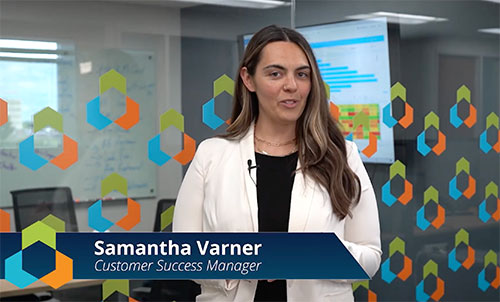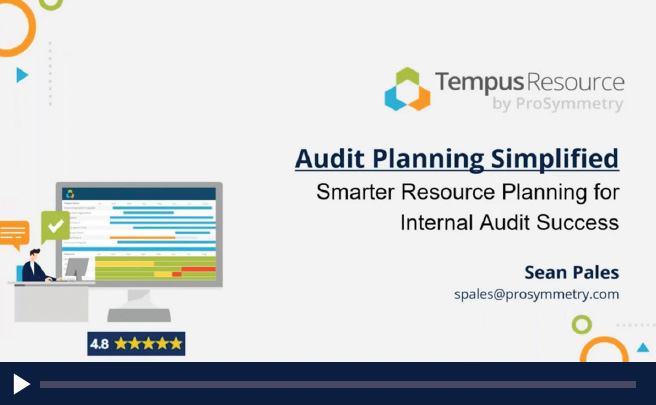Assessing a company’s risk can have different meanings, depending on your role within your company. Risks associated with governance, compliance, data security and ethics are top-of-mind for auditors. For auditors to ensure their audits are properly staffed, budgeted and planned, they must focus on managing regulatory requirements and strict deadlines while also coordinating the skills and competencies of those who work on the audits.
In this guide, we’re going to talk about workforce planning – what it means, the regulatory environment surrounding audits, why you need workforce planning, how workforce planning helps auditors complete audits on time and within required regulatory guidelines, and how to take advantage of tools designed to assist auditors in their workforce planning efforts.

What is Workforce Planning?
Our ability to finish audits and accomplish our goals is fundamentally determined by having qualified people. Without people, we can’t do work, we can’t complete audits, and we can’t implement strategy. Workforce planning helps us most effectively utilize our people to achieve our business goals. Workforce planning helps match our supply of people (resource capacity) with our demand for people (resource allocation). At its core, workforce planning isn’t about managing tasks—it’s about managing people, their capacities, and their skillsets to ensure audits are staffed within compliance.
While both workforce planning and resource management involve a strategic look at your team, project deliverables and how to best utilize your resources to achieve your goals, there are subtle differences that make workforce planning a better fit for internal audit.
When resource planning is done effectively by forecasting the audit demands for skills, experience and roles, workforce planning comes to shape. Workforce planning is an extension of resource management – it aligns HR, finance and audit leaders on the skills needed for future needs and gives leaders enough information to decide to either upskill their current people or to hire new resources.
Check out our webinar “Audit Planning Simplified” to learn more about smarter workforce planning for internal audit success.

Why Do Internal Auditors Need Workforce Planning?
Audit teams manage close to 1,000 audits each year, and each audit demands qualified people at specific durations in the timeline. If a certain skill, licensure, certification, or background is required for an audit to succeed, practicing workforce planning will identify those risks well in advance. This gives the team time to shift audit timelines, upskill current team members, or bring on new ones. When audit managers utilize the practices of workforce planning, they can proactively flag risks to the timeline, years in advance.
In order for an audit to be successful, the deliverables must be delivered on time and the audit must be compliant with regulations. Workforce planning means looking beyond basic roles and capacity to understand the skills, competency, and roles needed for the audit to be successful ahead of the audit plan starting.
Ideally, you want a qualified team that can not only execute the audit but also is able to focus on the audit at hand without competing priorities. Workforce planning is a central element in audit management because, when done properly, it ensures:
- Effective Utilization of Resources: By aligning skills and experience with audit requirements before the plan starts, firms can maximize the efficiency of their staff and quality of the audit.
- Quality Assurance: The right match of skills and audit requirements leads to higher-quality findings and reports.
- Risk Mitigation: Skilled auditors are more likely to identify potential risks and compliance issues.

GRC and Workforce Planning
Audit teams are helping companies ensure they are meeting regulatory requirements and following proper procedure by adhering to Governance, Risk and Compliance (GRC) systems. This concept helps organizations ensure leadership is meeting its objectives, is assessing and managing risk, and is following all applicable laws and regulations that impact the business.
To make sure all GRC challenges are met, it’s imperative to have qualified professionals in place. Workforce planning helps audit teams ensure people with proper certification, experience and up-to-date training are in place to complete the work. Having GRC software in place helps companies focus on their GRC strategy, but it’s important to couple that with a platform that can help auditors schedule the right people on the audit. Most GRC software focuses on audit deliverable dates and milestone definitions, not workforce planning. The key issue is that audit teams must be able to answer – while still keeping audits in motion – Can we actually deliver on that work with the resources and capacity that we have available right now?
Guide to Audit Resource Planning: Read more about how internal audit teams can complete audits within deadlines and with the required deliverables in this quick read about resource planning, integration with your GRC platform, and what tools you need to have in your resource planning platform to help your auditing plans.
With the right platform in place, your organization can begin the comprehensive audit planning process to better utilize resource capabilities. To learn more about why using spreadsheets is risky for workforce planning, watch our webinar.
Why Do Projects Fail? Read about some of the most common mistakes and how to avoid them.
What Internal Audit Teams Need from a Workforce Planning Platform
Auditors need specific features to be successful with a workforce planning platform, including:
Skills & Competency Management: An audit manager needs to have insight into team members, including their various skills that could be useful on various audits, the experience they gained on previous audits or at previous jobs, and their workload capacity. With these in mind, a successful audit manager can ensure future audits will be properly staffed, avoiding risks to delivery.
Reporting: Chief Audit Officers and such leaders need a powerful reporting and analytics tool that visualizes audit demands today, and more importantly for workforce planning, next year and beyond. Reporting needs to include plan-level forecasting and must be customizable and predictive to provide insight and help drive results. These reports must be shared with HR and finance teams to drive the conversation around future capacity needs.
Dynamic Planning and Forecasting: Audit managers need to be able to plan dynamically for future audits by role and by skill level, not the specific person who will do the work. This role or skill level planning gives audit leaders the data and information they need for form training or hiring strategy with HR and finance leaders.
Integration and API Flexibility: Most audit teams utilize multiple platforms and systems. For these teams to be effective long-term, they need these systems to communicate so data and results are not siloed, but shared to help leaders analyze, find opportunities, and grow the business. Any workforce planning platform must provide scalable API to assist with data integration.
Is Your Audit Plan Actually Achievable? Achieve your Goals with Tempus Resource: Watch this webinar to see how to turn your audit plan into reality using Tempus Resource

Additional Resources

To learn more about how to manage employee skills, and how to use a skills database to understand the skills of all team members to ensure the right resources are assigned to the right audits, read our Guide to Leveraging Skills in Your Resource Planning.

Visit our YouTube channel for helpful tutorials about many topics on workforce planning, skills management, and specific features in Tempus Resource that can help you achieve your audit plan.

Visit https://www.prosymmetry.com/use-cases/resource-planning-for-internal-audit to learn more about resource planning especially for internal audit teams, including common internal audit planning challenges, and a demo tailored to internal audit teams looking for a comprehensive workforce planning platform.





